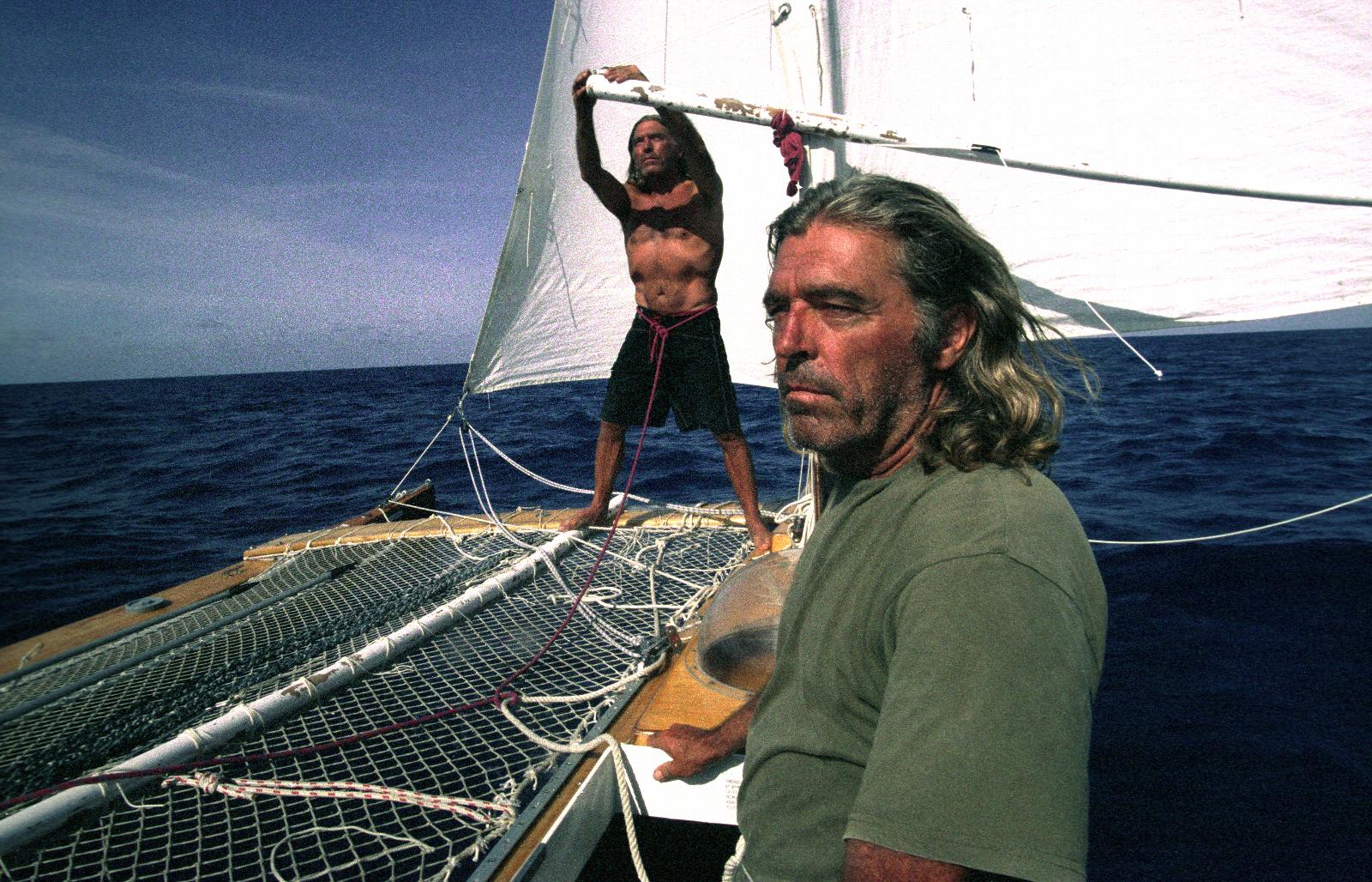Emmanuel and Maximilien Berque are twins. Born the 10th of January 1950 in Casablanca, five minutes apart. They spent the first 3 years of their lives in the mountains of the moroccan atlas, then 2 years in Egypt and 2 years in Lebanon.
In 1957, at 7 years old, they return to Paris as their father Jacques Berque is named professor at the College of France. They have a lot of difficulty integrating as they are the odd ones out, while excelling at gymnastics, drawing and music.
At the age of 12 they developed an interest in photography. And, they develop a real passion for the design and construction of boat and plane prototypes.
Before long, the results came, and all of a sudden they were high level students obtaining many rewards, mainly in Mathematics and Physics. Maybe a reaction against their father and brother or sisters, to their taste, too literary.
In 1968 and 1969 they successfully and easily pass their secondary exams in science. Maximilien goes into Superior Mathematics, then studies cinema while Emmanuel continues science at the university of Orsay before continuing in Oenology in Bordeaux.
Choice of life...
A rapid decrease of interest in their studies become apparent as their thirst of the liberty to travel and surf grew. They discovered the surfers life in 1964, and are the pioneers at Contis Plage where their family has an ancestral house. This allows them to devote themselves to the joys of the Sea-Sex-and-Surf movement, just like the Californian hippies. Whereas Maximilien works on television reporting, Emmanuel becomes an oenologue in Corsica.
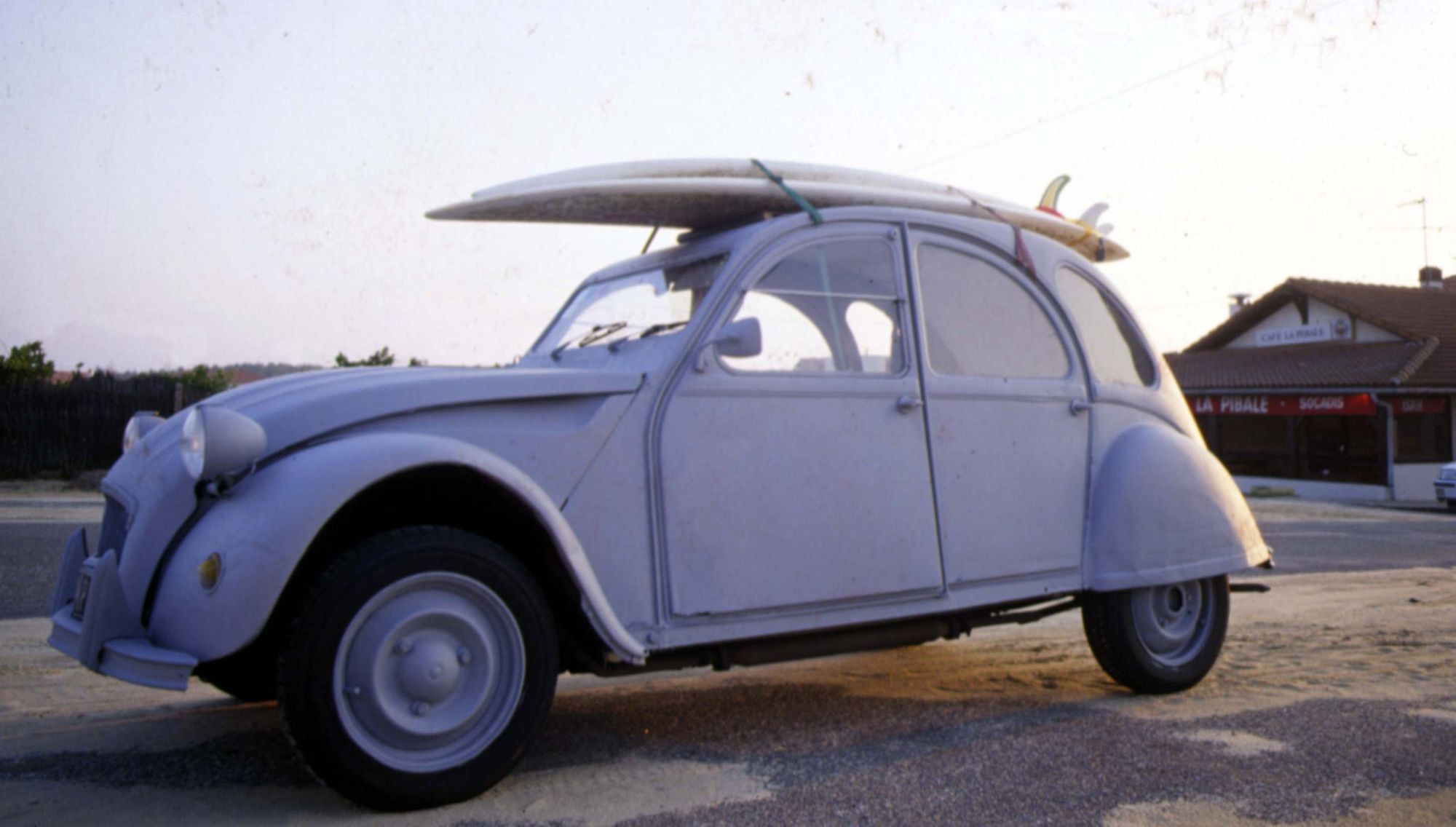

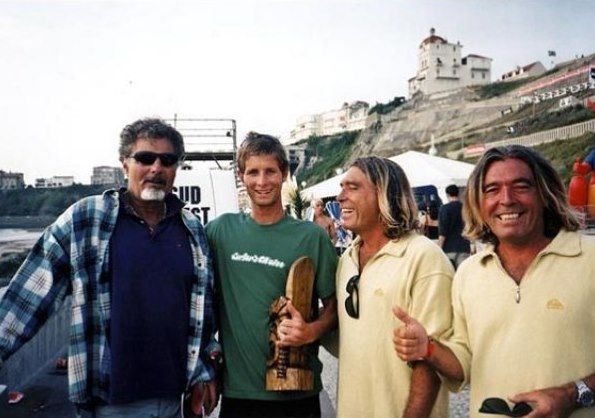
Later on, Maximilien becomes a professional deep sea diver for COMEX in the north sea. He was selected for the world record Janus IV at 510 meters but left the company in 1976 disliking the idea of "human guinea pigs".
The two brothers subsequently discover the, (at that time new) practice of sport catamaran sailing and continued surfing most of the time. One day they decide to try and make their fortune in Saudi Arabia by leaving from Marseille with a friends’ sailing boat for Djedda. To make this possible they learn astronomical navigation over a few weeks and become rather obsessed by it. Unfortunately the voyage has a tragic ending when the boat is destroyed during a cyclone in the Red Sea.
Around 1978 they are the first surf photographer journalists in France, revealing their beach-boy adventures.
In 1979, to make a film, they attempt to gain sponsorship for the first crossing of the Atlantic with a Hobie-Cat 18, eight years before Laurent Bourgnon managed to do it. Unfortunately, the American manufacturer refused to lend them the boat reasoning that it was too risky.
The idea would never leave them.
Liberty and wave waiting, not being big bread winners, pushed them into a life of surfing hermits until 1983. To rise from their misery they decide to make a film. A film of adventure, of a real adventure. They who had never been to America, decide to cross the ocean on an unreasonable contraption. The ocean would be the scenery, the film in real time would be a «Happening».
Instigating journeys...
So they build a small 4m80 trimaran, traced by eye, without a plan, diagonally across the entrance of their old house and call it Micromegas in reference to Voltaire and his theory: the relativity of everything in existence.
They do four instigating journeys and end up spending over a year in the elements, at 25cm from the water, on the 8m2 net of their tiny boat, which has no cabin for shelter, and looks more like a raft.
Imprisoned in a storm in the Bay of Biscay, they surfed 8 meter waves and came back completely burnt by four days spent in the salty sea water. They make a short film that they never managed to sell.
With a girlfriend from Berlin they arrive in the Canary Islands, very thinned down and completely broke.
For a few years they abandon the idea of crossing the ocean and spend a couple of winters in Berlin rebuilding their spiritual and financial health and of course to spend the summer surfing.
The mutineers of the sea...
During the winter they worked a lot on analytical geometrics and conceive a totally original and personal boat design program. They go back to the manufacturing of surfboards and with their freshly recuperated motivation undertake the conception and construction of another and even smaller boat of 4m made of varnished wood equipped with ancient rigging…the Micromegas 2.
It’s a genuine toy !
In June 1995, after 37 days on their boat they reach Guadeloupe. They gain a certain success with the media and sell 13 pages in VSD (a weekly news magazine) and a documentary of their Atlantic crossing in 37 days entitled “ Les jumeaux de la mer” broadcasted on Canal+. They appear in the Guinness Book of Records and received numerous adventure awards including the one from the festival of Dijon, presented by “ The Guild of Raid and Adventure”. A prize also from The Festival of Adventure of Angles. Guy Drut, at that time the French Minister of Youth and Sport decorated them with a medal for their performance.
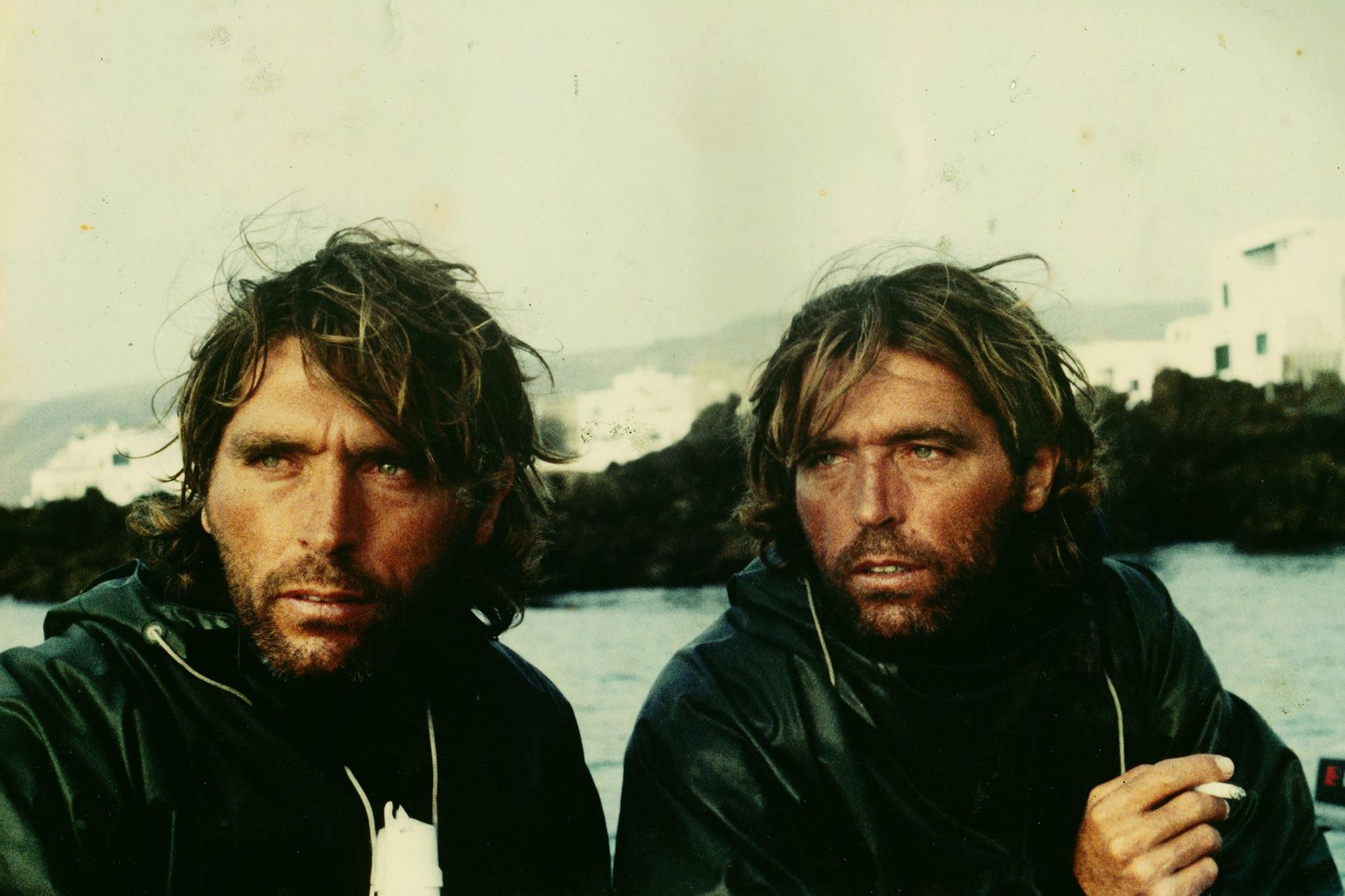
In 1996 they continue and finally arrive in Miami, Florida. Considering they left from their south-western French beach, Contis, the journey represents 11000 Km. The whole voyage without motor, any electronics, life raft or distress beacon. The smallest sailing boat in the history of the Atlantic to succeed in this crossing without any assistance and without sponsors. In spite of the purity of their efforts the media, nevertheless loose interest and once arrived in the USA, broke and in total anonymity they abandon their boat against a quay. Working on some millionaires’ yachts they manage to pay their airfares and return to France in incomprehension and paranoia.
They insist a great deal on the fact that their sailing boat is a real vessel opposed to a lot of floating apparatus exclusively consecrated to breaking records, incapable of manoeuvring, entering or exiting a port.
In 2001 they publish with the editor Robert Laffont «Les mutins de la mer».

The tribulations of two non-conformists searching for freedom, if it exists.
With the royalties from their book they design and make [ Micromegas 3 ] in their attic. A small 300 Kg varnished wooden outrigger canoe with which they will once again cross the ocean, only this time without any instruments aboard! Meaning no compass, no watches or maps or any documents and of course no sextant. This means apart from food and water…nothing!
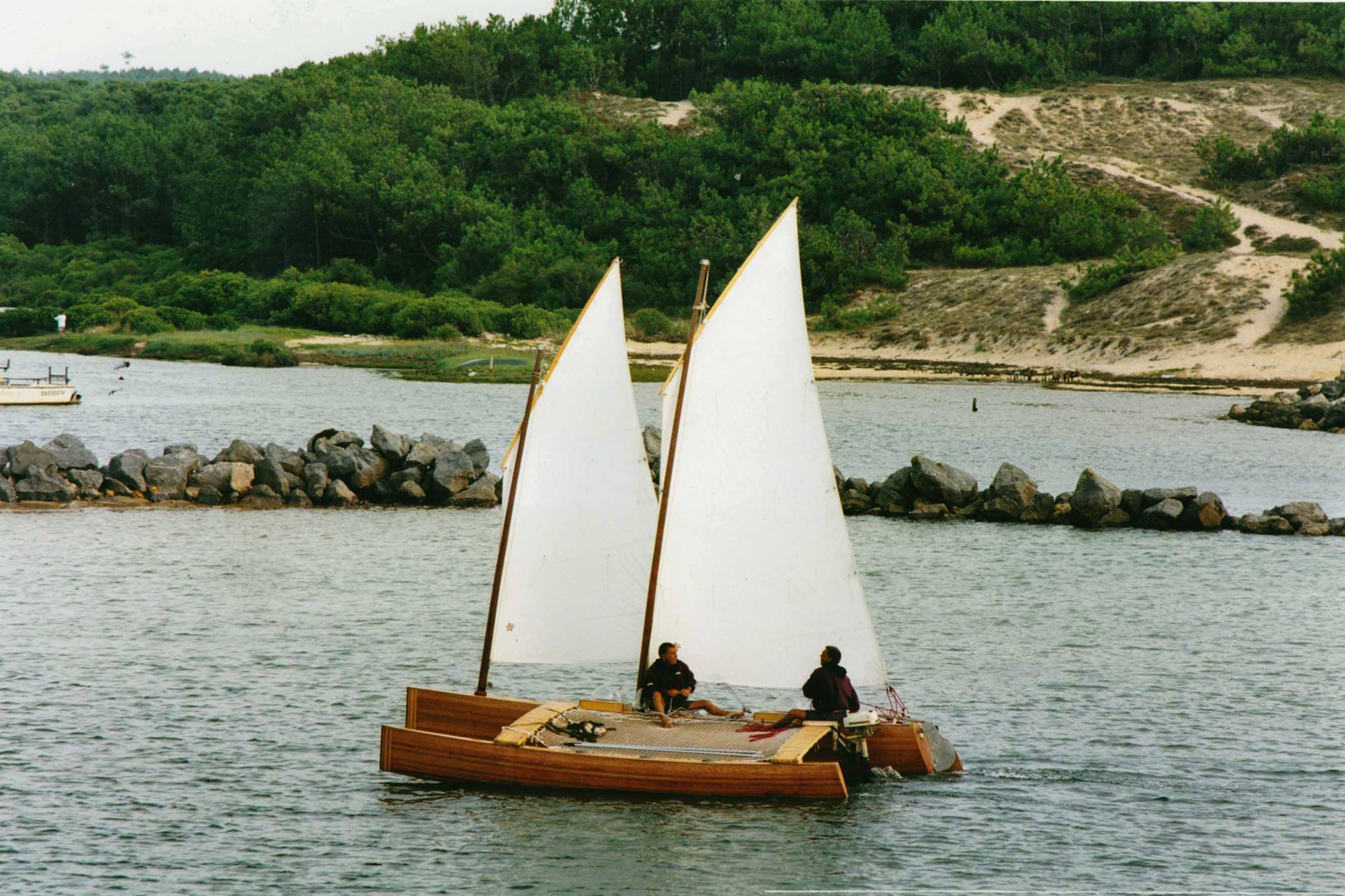
So in this way at 53 years old they want to try a truly archaic crossing, like the Maoris crossing the Pacific around the 5th century well before the Viking, Arab or any other navigators. For the love of the art of navigation, the purity of fraud less individual achievement, to return with beautiful images and a film, live something unique. If we ask them why they do it they simply reply: «It’s stronger than us !»
If this story does not make you daydream, nothing will. For now, we highly recommend reading the book. We will soon follow up with an in-depth interview.
Aloha.
Update: We now published an uncut version of this incredible story. #longread
